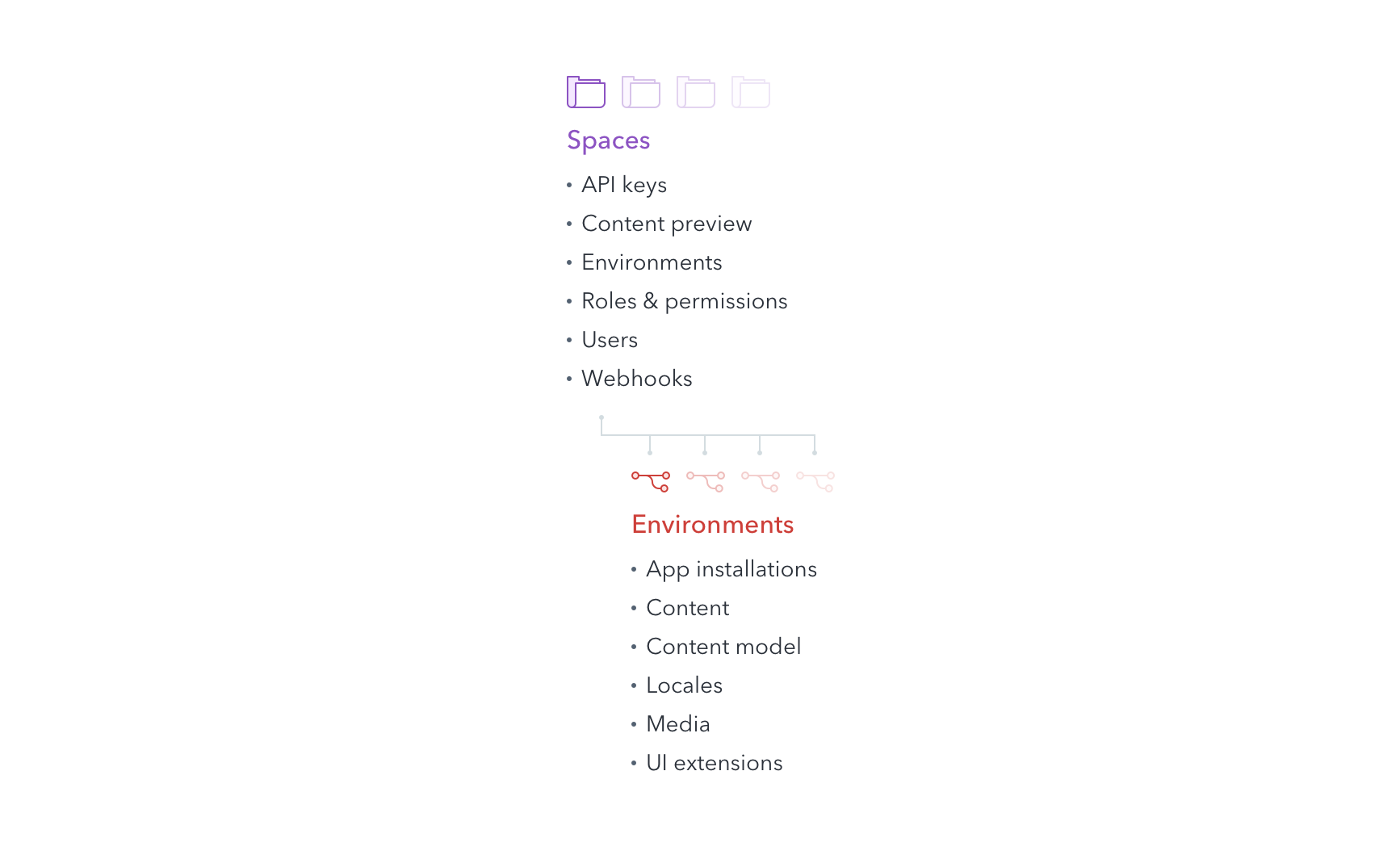Multiple environments
What is an environment?
Environments are container entities within a space that allow you to create and maintain multiple versions of your content types, and make changes to them in isolation.

Whenever you add a space, it comes with a default “master” environment. Additionally, multiple sandbox environments can be created in the space. To create a new sandbox environment, you clone either the “master” environment or one of the sandbox environments.
Environment-level entities and settings
An environment serves as a container for content entities like content types, entries, and assets. Locales, UI extensions, and tags can be set up per environment.
When making changes to any of the aforementioned entities in an environment, the entities in all other environments aren't affected and stay the same.
Apps are installed on an environment level. An app can be installed either in a single environment or in multiple environments and be configured per environment.
Environment aware resources
Environment aware resources are the resources that are copied to the new environment from the environment that is cloned. To learn more, refer to the Environments API reference.
API keys and webhooks configuration per environment
API keys are bound to a single space. However, they can be configured to only grant access to specific environments. The same applies to webhooks—they can be filtered to trigger only on changes within specific environments.
User's access to environments
Permissions to manage "master" and sandbox environments and the data they contain is defined by a user's space role.
By default, a user's space role has access only to the “master” environment or the “master” alias (if the “master” alias is set up in the space). For this default role, any of the entities and settings listed above are the direct children of the space.
A user that is granted the Administrator role has access to all environments within a space and can create, read, update, and delete sandbox environments.
You can enable a custom role to access specific environments of your choice. Also, you can allow a custom role to manage and use all environments in a space. With this option, content and media rules will apply only in the “master” environment or the “master” alias, and not in sandbox environments.
How to use "master" and sandbox environments
To learn more about the common uses for environments and environment aliases, refer to Environments and environment aliases best practices.
Environments technical limitations
When working with “master” environment or “master” alias and sandbox environments, consider their technical limitations as follows:
- The “master” environment or the “master” alias (if the “master” alias is set up) can’t be deleted and its name can’t be changed.
- Our SLAs only cover the availability of content within the “master” environment or the “master” alias (if the “master” alias is set up).
- Entry versioning and CMA snapshots are supported only in the “master” environment or an environment that is targeted by the “master” alias.
